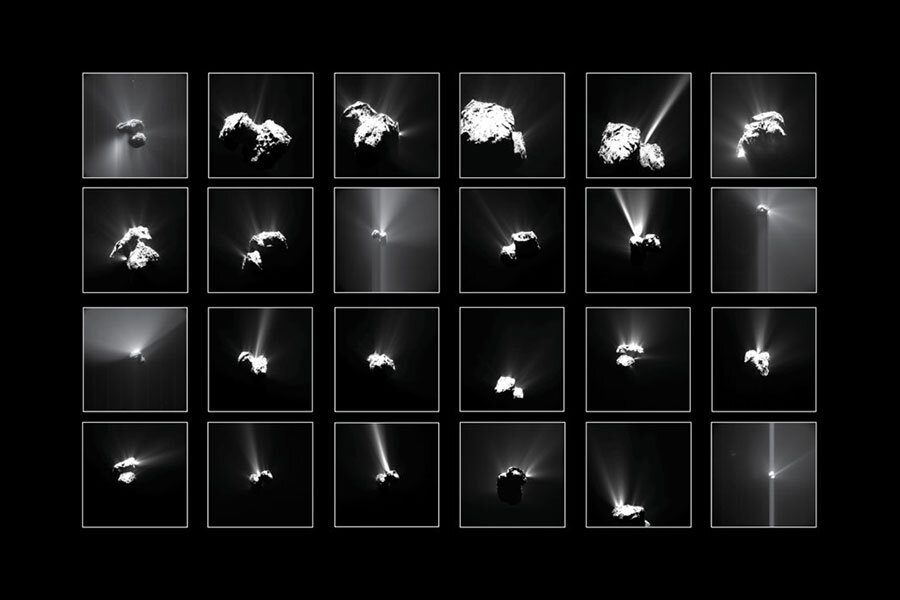Rosetta pictures of summer fireworks on comet 67P explained
Loading...
In a study published Friday, scientists report that the fireworks captured by Rosetta spacecraft’s camera during its two-year, close-up study of comet 67P/Churyumov-Gerasimenko came from the comet’s surface.
Rosetta's photos featured 34 outbursts that it captured last summer as it made its closest approach to the comet, which belongs to the Jupiter family of comets. The European spacecraft had been traveling close to the comet for months in order to analyze its surface. The outbursts were more violent than the predictable jets of dust and gas ejected by a comet when it is illuminated by the sun, possibly because the material was coming from deep inside the frozen comet and bursting out of constrained spaces.
“The team found that just over half of the events occurred in regions corresponding to early morning, as the sun began warming up the [comet’s] surface after many hours in darkness,” the European Space Agency, which manages the Rosetta mission, reported in an announcement. “The rapid change in local temperature is thought to trigger thermal stresses in the surface that might lead to a sudden fracturing and exposure of volatile material. This material rapidly heats up and vaporizes explosively,” reported the agency.
The news comes a week before Rosetta’s retirement after an illustrious 12-year career in space, where the craft helped astronomers study the composition of 67P in the most detailed study of a comet ever.
As The Christian Science Monitor has reported, comets offer scientists clues to the formation of our solar system:
Comets, along with asteroids, represent the construction rubble left over from the solar system's planet-building stage some 4.5 billion years ago. Comets in particular are thought to carry some of the most pristine ingredients the young sun and its extended disk of dust and gas had to offer as raw material for planets. Comets also are known to carry organic compounds and are thought to be one type of vehicle that delivered water and organic chemicals to Earth – chemicals that could serve as building blocks for more-complex molecules underpinning organic life.
ESA is planning to begin shutting Rosetta down on September 30, after its gentle, 15-hour drop to the surface of the comet from a height of about 12 miles, as The Guardian reports.
Rosetta will land in a region that appears to release the comet’s dust and gas. The plan is to have its onboard camera, Osiris, peer inside the pit that releases the materials to gather more information about the comet’s geology. Eventually Rosetta’s instruments and transmitter will be switched off and it will join Philae, a probe that it released to the comet’s surface in 2014, in retirement. Philae is famous for capturing the first-ever photos from the surface of a comet.








